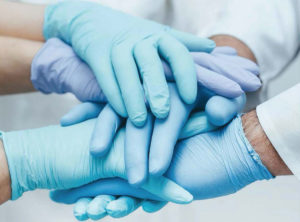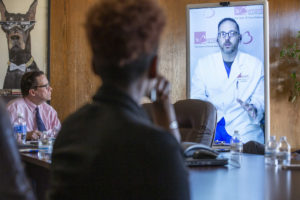Hospital to hospital transfers are a significant source of growth and revenue for many health systems.
It is estimated that an average of 3.5% of all hospital inpatient admissions come from interhospital transfers, with larger facilities having a significantly higher proportion of transfers accounting for their total admissions.[1]
However, the interfacility transfer is still a fragmented process that can lead to medical errors and even death. Finding safer ways to receive transfers from other hospitals can improve patient care, decrease costs and increase patient and physician satisfaction.
The use of telemedicine during the transfer process is an ideal way to achieve these improved clinical outcomes and reduce risk.
The Dangers of Hospital to Hospital Transfers
Since there is little-reported data on transfer volumes and adverse events related to transfers, there have been few studies done on the subject.[2] A lack of quantifiable data has left the healthcare industry without specific guidelines or best practices for interhospital transfers.[3]
This lack of standardization leaves a unique transfer process for every health system. Of the studies that do exist, estimates suggest that up to 30% of interhospital transfers resulted in adverse events.[4] These adverse events are likely an effect of poor communications and an inability to collect first-hand patient data.[5]
The Source of Medical Issues in Interhospital Transfers
According to the Joint Commission Center for Transforming Healthcare, 80% of serious medical errors involve miscommunication between caregivers during the transfer process.[6]
Errors in communication often result in the patient’s arrival at the receiving facility in a condition different than anticipated. Incorrect patient information not only affects patient safety but also bed placement and bed status, which can result in a loss of efficiency and revenue.
It is also common for a patient to be received with illegible notes and lacking clinical data from the transferring facility. When results are missing, the receiving provider needs to repeat labs, imaging and EKG’s at an additional time and cost to patient care.[7]
Sacrificing Patient Care during Interhospital Transfers
From the patient’s perspective, their arrival comes with significant apprehension. The patient is unsure where in the facility they will be placed and who will be caring for them.
REQUEST A DEMOMany patients complain they have not been allowed to eat or drink since their arrival at the transferring facility ER. They are left waiting until the receiving provider is available to complete their H&P and place orders. Depending on the time of day and current workflow, this could take hours.
Delays in order completion also affect other parts of the patient’s care plan like pain medications, resuming home prescriptions and ongoing orders needed by the clinical care team.
The patient’s family members are also often left in the dark, especially when they don’t have the means to travel with their loved one to the new facility. A lack of information leaves a family wondering how the patient is going to be cared for and how they can stay involved in the treatment plan. Not having access to the patient’s family is challenging for the receiving provider, as family members are often the primary source of the patient’s clinical history.
Improving Hospital to Hospital Transfers with Telemedicine
Telemedicine fundamentally changes the interfacility transfer process. Having access to the patient before the transfer through telemedicine allows the receiving facility a firsthand look at the patient, their clinical data and clinical status. This process is known as the “teletransfer.”
The teletransfer provides a more accurate hand-off, bed placement and patient status for the receiving facility. Remote patient and family interactions by telemedicine enhances history gathering, which decreases apprehension about the transfer process and improves patient satisfaction.
Earlier history taking and examination can then be used to build the H&P, place pre-arrival orders and limit the risk of missing or inaccurate patient data. Typically, teletransfers enhance patient outcomes, decrease the length of stay, minimize liability and improve ROI.
This is the first blog in a series about the teletransfer process. Subscribe to the blog for a notice when the next in the series is released.






